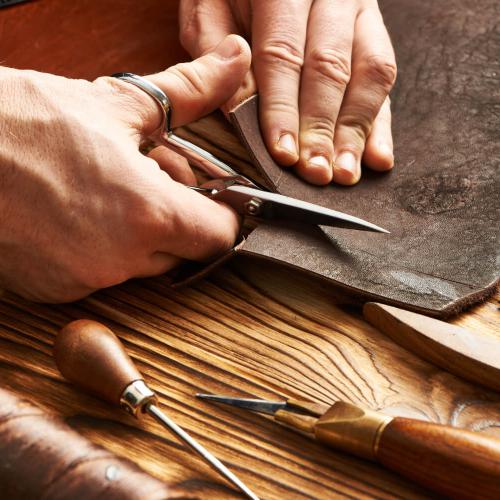
In an era dominated by mass production, handcrafted leather goods stand out as a beacon of quality and craftsmanship. Unlike their machine-made counterparts, these items are created by skilled artisans who use traditional techniques passed down through generations. This meticulous process results in not only superior quality but also a deeper sense of value and uniqueness in each piece.
Superior Quality of Materials
Handcrafted leather goods begin with a selection of high-quality materials. Artisans typically choose full-grain or top-grain leather, which are the highest grades of leather available. These layers of the hide are the most durable and naturally resistant to wear and tear. Full-grain leather, in particular, includes the outermost layer of the hide, retaining all the natural grain and imperfections that add character to the final product. This contrasts sharply with machine-made goods, which often use cheaper, corrected-grain leather or synthetic materials that can deteriorate quickly over time.
Attention to Detail
The hallmark of handcrafted leather is the attention to detail that artisans invest in each piece. Every stitch is placed with precision, and the edges are often hand-burnished for a smooth, refined finish. This process not only enhances the aesthetic appeal but also strengthens the product, ensuring that it can withstand the rigors of daily use. Machine-made leather goods, on the other hand, rely on automated processes where speed often trumps precision, leading to weaker seams and a less polished finish.
Unique Character
Each handcrafted leather item is unique, carrying the individual marks of the artisan’s tools and techniques. This uniqueness means that no two pieces are exactly alike, giving each a distinct personality and charm. This is a stark contrast to machine-produced items, which are designed to look exactly the same, lacking any individual character or soul. The natural variations in color and texture of handcrafted goods are not only visually appealing but also a testament to their authenticity and heritage.
Durability and Longevity
Durability is another area where handcrafted leather goods excel. Because artisans have control over every step of the manufacturing process, they can ensure that each piece is built to last. The use of superior stitching techniques like saddle stitching, where two needles weave in and out of the same holes, results in a more durable bond that is less likely to unravel than the lock stitch used by machines.
Moreover, as handcrafted leather ages, it often develops a patina — a soft sheen developed through aging, wear, and exposure to natural elements. This patina is highly sought after because it gives the item a rich, lived-in look that cannot be replicated by artificial means. Machine-made leather goods rarely develop this desirable feature and instead tend to wear out or look dated as they age.
Ethical and Sustainable Production
In addition to quality and aesthetic advantages, handcrafted leather goods often come from more ethical and sustainable production processes. Artisans typically source their materials responsibly and work in conditions that are far better than those in large factories churning out mass-produced goods. By purchasing handcrafted leather, consumers support smaller businesses and traditional crafts, promoting a more sustainable and equitable economic model.
Conclusion
While machine-made leather goods might be more accessible, handcrafted leather stands superior in quality, durability, and ethical value. The careful selection of materials, precision in craftsmanship, and the unique character of each piece make these goods a wise investment for those who value quality over quantity. In a world where fast fashion and mass production are the norms, handcrafted leather goods offer a timeless appeal that is both luxurious and lasting. By choosing handcrafted, consumers not only acquire a superior product but also contribute to a tradition of craftsmanship that enriches our world.